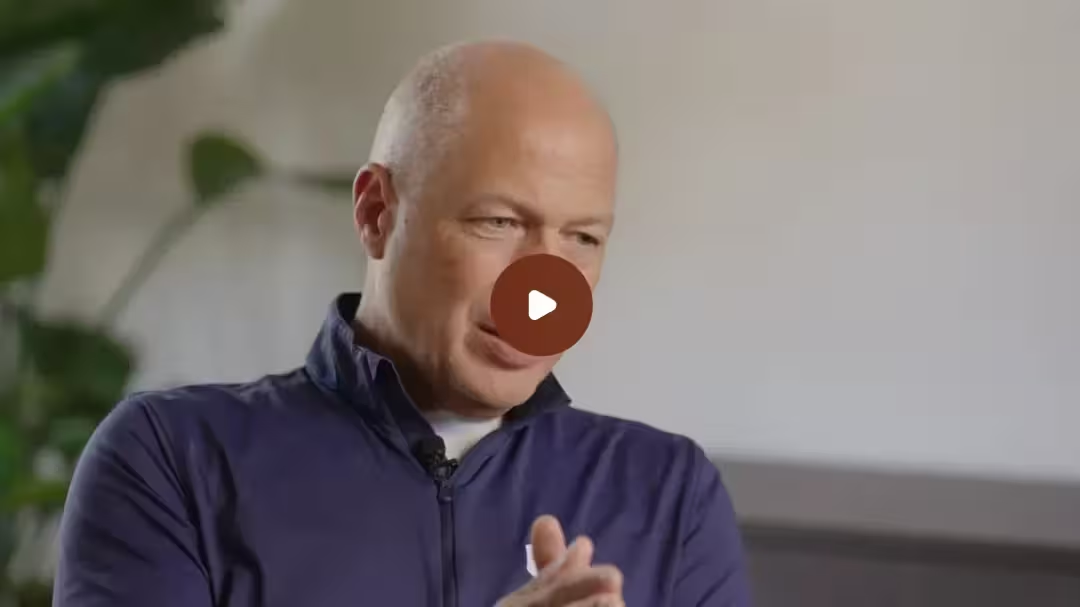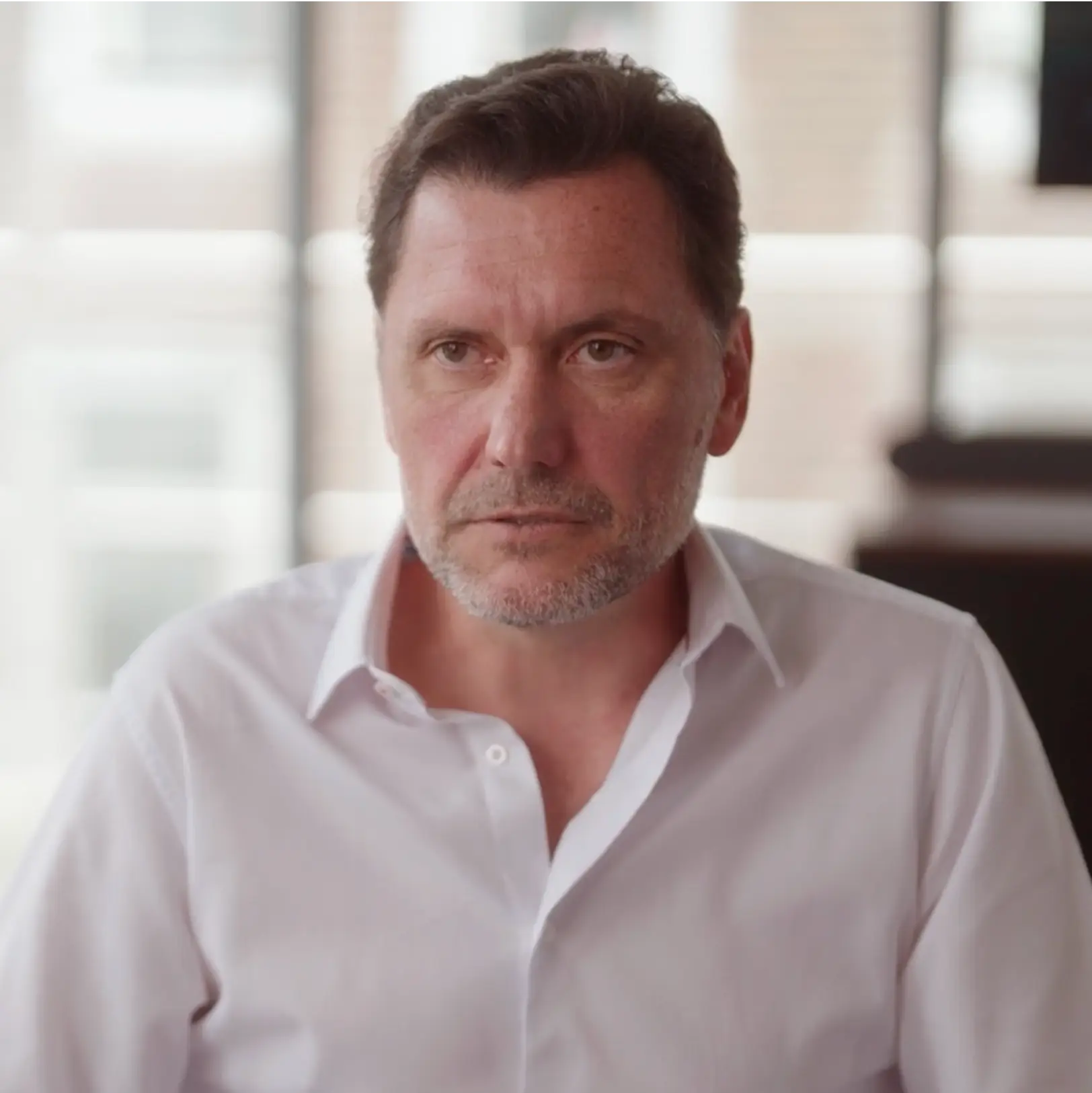
From navigating the ocean to navigating sales processes, Jennifer Laurie's path into sales ops makes for good reading! After six years of working on boats, Jennifer embarked on a career in sales ops and now has her feet firmly on the ground in her role as Revenue Operations Solutions Manager at Vidyard. Working as a sales ops leader at a rapidly growing company like Vidyard, Jennifer knows her stuff when it comes to implementing new processes, sussing out new technology, and managing change.
Rory Brown (RB): Could you tell me a bit about whoJennifer Laurie is and how you got into sales ops?
Jennifer Laurie (JL): Before I got into sales operations, my background had nothing really to do with sales and finance. At school I studied criminal justice and public policy, and I was originally planning to be a police officer, but I realised that that was not what I wanted to do. So, after university I ended up travelling and working on boats for about six years. Upon returning home to look for work, I found that working at sea does not get you very far on land! I went back to school for HR, and got my start as a temp in HR, and then finance, and IT, all at the same company, and with their help I was able to get into the job market.
I had never heard of sales operations; I didn’t even know what it was. But as soon as I started doing it about 9 years ago, I found that I really liked it. My career started off at a company that built hardware aswell as software, so I was mostly order processing and doing logistics for customers. Then I started doing forecasting for materials and revenue, and I became like a go-to QA tester. I think that’s why now in my role I mostly process, and I basically figure out a way to make our organisational strategies real. It’s about figuring out how to give the customer the best experience and how to align ourselves internally to deliver that experience to them.
RB: Brilliant, and I believe you have been at Vidyard for 3 years now? Has it changed a lot in that time?
JL: It’s changed in a lot of ways. Logistically, we have doubled in size and moved offices. We’ve also changed a lot in how we collect and use data. When I joined, we were doing all our sales orders in Word. We weren't able see what people bought or have confidence in the details in salesforce, so we were very reliant on our finance team for insights - which was just three people agesat the time, and that wasn’t a scalable solution. Since then, we have rolled out CPQ and started tracking our renewals with a one-year rolling date. So, when an opportunity closes, a new one is created, and there is visibility on everything they have bought. This includes what their dates are, what’s renewing, and much more. We have a lot more information available to us now, and everyone can see everything at one time – instead of just two or three people having access to the information and handing it out on a static excel sheet.
RB: Great. It sounds to me like a lot of new processes involve new technology or the adaption of technology. Let’s say you come out of a meeting and there’s a new strategy, for example, you mentioned a partner play or a channel play.
How do you approach steps that you go through in terms of getting this down into process which people will follow and give you the information that you need?
JL: I always keep the end goal in mind and focus on figuring out the right way to get there. I then work backwards, looking at what steps we need to get there and see if we can leverage an existing solution, whether we need to purchase a new one, or if it’s a matter of people change management.I find that so long as I’m keeping the user experience, whether its internal or external, in mind it generally works out - you have some hiccups, but I try to keep it grounded as much as possible.
RB: Brilliant. So, as an example, let’s take a systems change that requires changing behaviour. What sort of principles, or what sort of systems have you employed to try and get people aware of the change and why it's going to help them? This is probably one of the hardest parts.
JL: For sure. You always start by finding out how it is going to help them and then delivering that message. There is no point in telling them it is going to be a change if you can’t tell them how it will make their lives better – they won’t adopt your change no matter how fantastic you think it is. The first step is always figuring out what about this is going to make their lives better and making them excited about the change. Getting a few power users on each team to get their peers enthusiastic is also useful. Salespeople will listen to other salespeople before they listen to an operations person. It’s also important to always think about how someone might feel about the change. You can have the best rollup plan in the world, but if you have not considered how people are going to feel about it, it won’t be successful.
RB: I like that a lot. So, going back to the power users, how do you know who to select, and how do you find people that are willing to show that it’s a really good tool?
JL: I always ask for a volunteer, because a volunteer is better than a recruit any day. If you can get someone to raise their hand and say ‘yes, I want to be a part of it’, they are going to sell your solution way better than someone who has been called upon. If I don’t get any hands raised,I will then ask to get invited to a team meeting and pitch it to the whole group. I have yet to come across a meeting where no one has volunteered before. As we are a pretty young company we are disruptive by nature - everyone here is comfortable with change, so they often want to be a part of that design and they want to feel like their voice has been heard.
RB: Yes, for sure, as you rightly said, you guys are already in that environment where there’s change happening all the time.
So, when it comes to data then, let’s say you roll out a new process, you have obviously got to think about what you capture. And when capturing data, we are typically relying on salespeople.
What have you found works there with regards to balancing the right data, the right amount of data, and not impeding people in their daily work routine?
JL: It is a balancing act that we must change all the time. As we’re working to automate and scale, we need things to be consistent, but we still want them to have all the flexibility. When I build things, I build them in a way where if you follow what we want you to do it will be easy; but if you try to carve out your own path it will be a lot more difficult. That generally encourages people to stay on the worn trail. I then try to build in escape hatches so that the system admins can go in and override rules to do what we need to do.
I try to avoid as many required fields as possible because from a user perspective, it just slows things down. It would be better to understand what exactly this information will be used for. If something is going to be required, then you want to make sure that it will provide meaningful results, as opposed to just information. It all just depends on what we are hoping to achieve and then trying to keep that as simple as possible.
RB: Right. And I would imagine that you get a lot of requests to add new fields or build things back. How do you tactfully ask people to explain what the true value of this information is before you implement their change?
JL: To be honest I just ask. Everyone here is very open and transparent, which is fantastic, so having those conversations to get context is a normal part of designing here.
We also have monthly meetings with each of the different business units to sync up on their KPIs and make sure we’re still providing the right information to them. Context is so important – to just send over information can be a disservice, we want to make sure we’re sending oversights that are actionable.
RB: I like that a lot, thanks.
So, let’s move on to technology. At what point do you know that acquiring new technology is the best thing to do, instead of trying to make do with the systems that you already have? And how do you evaluate new technology?
JL: I get prospected a lot for new tech. Everything in the demo looks super cool and innovative - but you always have to think about what you're trying to achieve. Would an existing tool work with some changes or is it something totally new you’re trying to solve? When there’s a need you're trying to solve, hijacking an existing tool to make it work isn’t always the answer. You will eventually reach a threshold where if you corrupt a system further, it will be less effective than it is supposed to be, and the workarounds will become increasingly complicated.
RB: Let’s talk a little bit about the people and your stakeholders. I have spoken to some rev ops leaders who see their own business as their customers. How would you describe your relationship with the key stakeholders you work with daily, such as C level and sales leaders?
JL: For me, my customers are Vidyard’s customers. It’s all part of starting at the end and working backwards. I try to keep in mind what the customer experience should be and work backwards from there on what things need to look like internally. Sometimes that internal structure is making sure we’re collecting the right information along the way, so we can make good future decisions, or how to make our internal user experience as frictionless as possible. The more we can focus on delivering value to customers and not ticking boxes the better off we are. And internally, I would consider, every Vidyardian as my stakeholder. I want to hear everybody’s ideas. You get caught up in your own bias of how you have done things in the past, so fresh ideas are always a good thing to get.
RB: Who would you say you’re closer to, your VP of sales,CFO, or perhaps the sales team themselves?
JL: It’s so important for rev ops to be neutral but also to be close to everyone. Since our ultimate stakeholder is Vidyard’s customers, keeping that in mind heps with our objectivity. Often teams will have different needs, but as long as we’re focused on the customer and business overall, that’s always the right answer. Sometimes that means one group doesn’t get everything they want, but I’m always open about how a decision is made.
RB: The other thing I have picked up is that the number of departments that rev and sales ops touches on now is probably one of the broadest in the whole business. So how do you manage that? Where do you start and how do you choose what to tackle?
JL: Company alignment is a big focus at Vidyard. Everyone knows what the company goals and objectives are, which helps focus team goals and objectives. The business priorities are rev ops priorities, so that’s where I start. When deciding on resources internally I look at value vs effort, tackling the high value, low effort project first. Often our engagement with other groups is to be a bridge between teams. We’ll sometimes get conflicting requests that would benefit one group but disadvantage another, so we have that mediation role as well. It’s all part of why it’s important to be neutral and unbiased.
RB: This might be a slightly trickier question. If we are looking at sales being the central hub of the role, and everything else surrounds it, with which department would you say the sales link is the most difficult? What’s been your experience of that?
JL: You’re going to get me in trouble! I don’t know if I would say any are inherently difficult. Different teams have different messaging and talk tracks, which means it's not the relationship that’s difficult, it’s the overall alignment and messaging. We want the customer experience to be the same throughout their whole life cycle, so the challenge is to make sure the messaging and the branding is the same across all teams.
RB: From your experience, what does success in revenue operations look like? And furthermore, is there a way to measure it?
JL: Our KPIs are the company KPIs. Since major functions of rev ops are aligning teams and executing on company strategies, our KPI is how successful those teams are and the company is. If we were working on a system or business program, how did that rollout go – did the individuals impacted understand the change and buy into it? How did the company-wide roll outgo, do teams have all the data and insights they need, and if there is an external aspect of it, how is the overall customer experience? Those are the questions we ask ourselves as we do our project debriefs.
RB: Have you found that across your companies doing this, has the business asked that you show them your results or is that not the case?
JL: We do get these types of requests, and for some things there can be a measurable activity. If we’re working on an initiative to automate more manual processes, we can put clear KPIs around impact, timing, and success. Other initiatives have less clear KPIs, but since objectivity is so intrinsic in our roles we’re pretty honest about the success of a program.
RB: Lastly, you spoke about making the experience for the customers being a priority to you.
Given that you’re not in a customer-facing role, how do you educate yourself about what the customer is going through and what the journey looks like.
JL: It’s true, I don’t talk to our customers directly. I do see the data that we gather, including NPS comments and notes that people in those customer-facing roles make on customer feedback. I also look at it from the perspective of a person who is a customer for other businesses. When I’m using a tool in our tech stack, I know what experience I want. Anybody does - you go to the store or buy something online, you want to be treated well, you want it to be easy, and you want to be treated like an individual, not a number. So, we try to make sure that our customers can sense that empathetic feeling throughout the whole process. We focus on making sure we continue to have that positive vibe, and we acknowledge that good service delivery is important to keep our customers happy. That also means people should have the same experience no matter who they talk to - whether it's from our outbound sales team, a customer success team, or a marketing team, it should all be consistent.
RB: I totally agree, and that’s a nice way to finish. I appreciate your time and for sharing everything. There’s some good stuff in here and some very process-led answers. It’s been a pleasure!
Want to get more insights from sales ops leaders? Check out our other interviews in the sales ops interview series.
At Kluster, we’re big fans of sales operations…
We recognise the growing importance of sales operations. No longer seen as the function that provides spreadsheets, sales operations is integral to building a repeatable, scalable sales machine.
That’s why we built Kluster. We make analytics and forecasting systems for you so you can spend time doing what you do best: uncovering trends and delivering growth defining insights.
Kluster gives you total visibility into the effectiveness of your sales machine and helps you generate credible forecasts to revenue leaders and the board.


.svg)
.svg)
.svg)
.svg)










